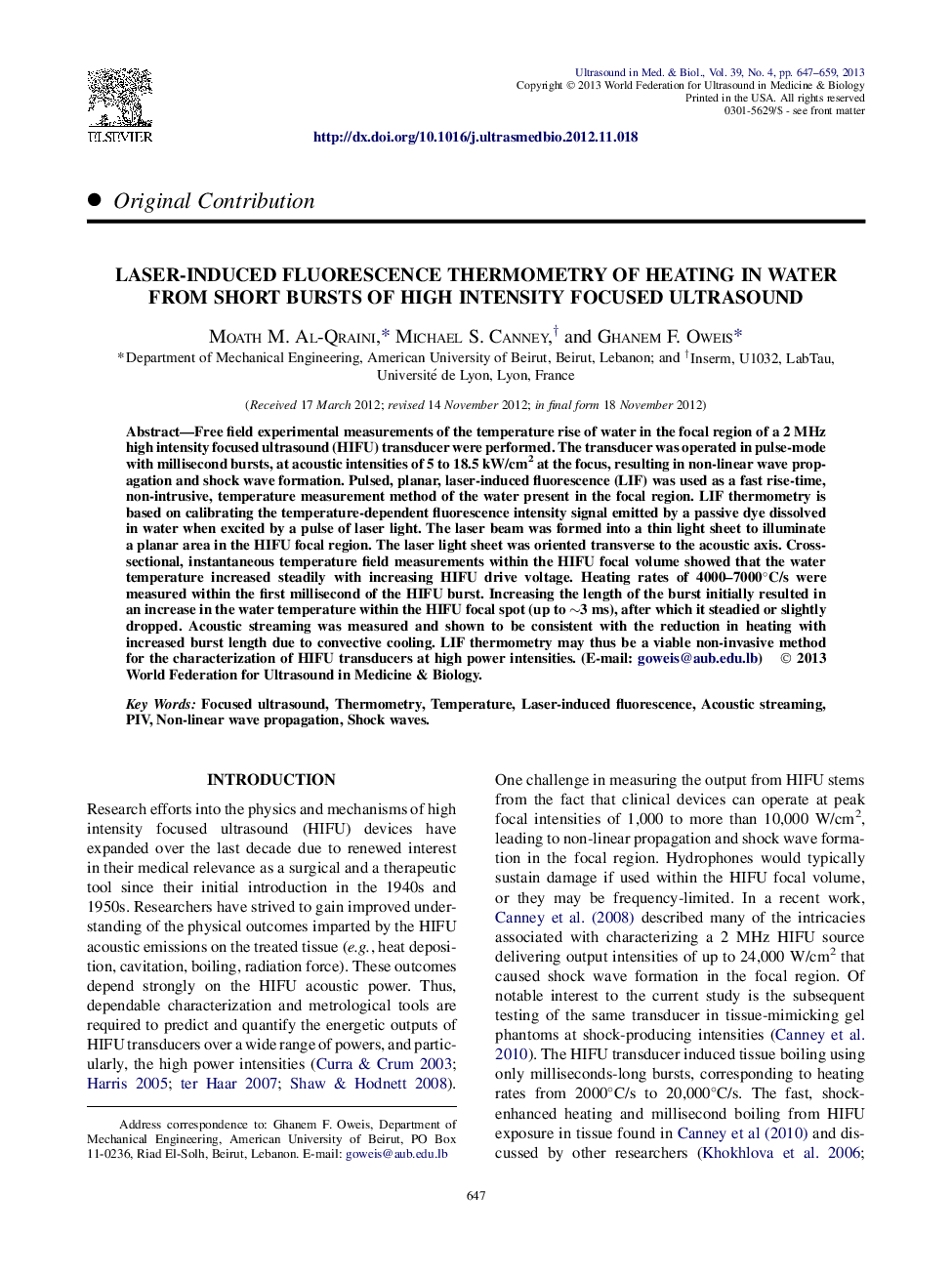| Article ID | Journal | Published Year | Pages | File Type |
|---|---|---|---|---|
| 1761144 | Ultrasound in Medicine & Biology | 2013 | 13 Pages |
Abstract
Free field experimental measurements of the temperature rise of water in the focal region of a 2 MHz high intensity focused ultrasound (HIFU) transducer were performed. The transducer was operated in pulse-mode with millisecond bursts, at acoustic intensities of 5 to 18.5 kW/cm2 at the focus, resulting in non-linear wave propagation and shock wave formation. Pulsed, planar, laser-induced fluorescence (LIF) was used as a fast rise-time, non-intrusive, temperature measurement method of the water present in the focal region. LIF thermometry is based on calibrating the temperature-dependent fluorescence intensity signal emitted by a passive dye dissolved in water when excited by a pulse of laser light. The laser beam was formed into a thin light sheet to illuminate a planar area in the HIFU focal region. The laser light sheet was oriented transverse to the acoustic axis. Cross-sectional, instantaneous temperature field measurements within the HIFU focal volume showed that the water temperature increased steadily with increasing HIFU drive voltage. Heating rates of 4000-7000°C/s were measured within the first millisecond of the HIFU burst. Increasing the length of the burst initially resulted in an increase in the water temperature within the HIFU focal spot (up to â¼3 ms), after which it steadied or slightly dropped. Acoustic streaming was measured and shown to be consistent with the reduction in heating with increased burst length due to convective cooling. LIF thermometry may thus be a viable non-invasive method for the characterization of HIFU transducers at high power intensities.
Keywords
Related Topics
Physical Sciences and Engineering
Physics and Astronomy
Acoustics and Ultrasonics
Authors
Moath M. Al-Qraini, Michael S. Canney, Ghanem F. Oweis,
